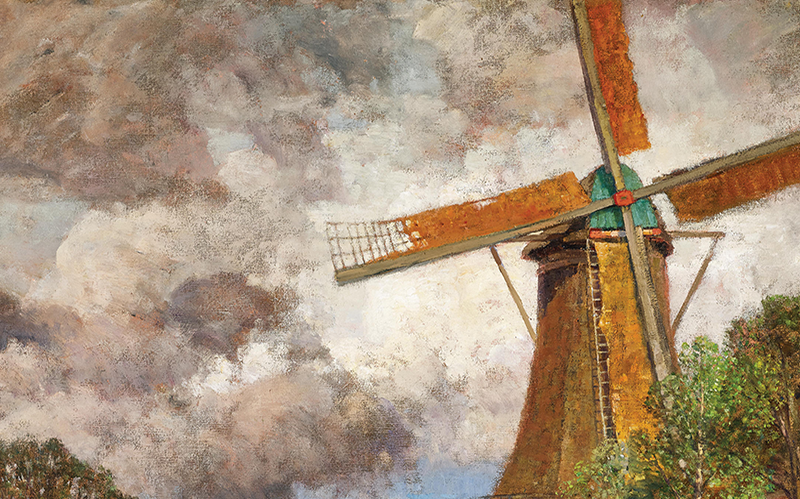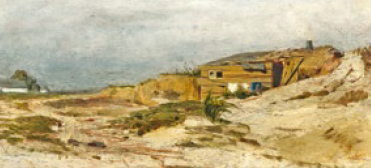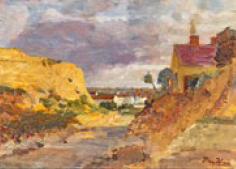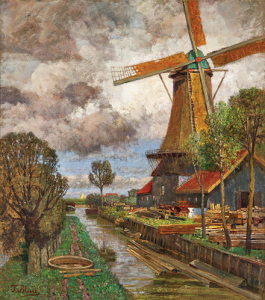
Atmospherical Landscape
Tina Blau was the first female painter of Austrian Stimmungsimpressionismus (Atmospheric Impressionism) to work en plein air with an easel and brush. Her landscape studies are among the most striking of the late 19th century.
An extraordinarily talented artist, Tina Blau captured her surroundings in a modern, formal style of painting, depicting reality as she saw it through her own eyes. As a result, her work is not only artistically significant, but also serves as a historical record, and it continues to preserve the beauty of nature into the present. This legacy is clearly illustrated by her paintings coming up for sale at the 19th Century Paintings auction on 25 April 2024.

In addition to what was probably her favourite place of study, Vienna’s Prater, Blau devoted many hours to exploring the countryside around the Austrian capital and the Danube wetlands. Painted around 1872, a small landscape in horizontal format brilliantly captures the atmosphere near Fischamend at the time of the Danube regulation scheme between 1870 and 1875, a period that saw a floodplain created between Nussdorf and Fischamend and a new riverbed excavated. Fascinated by this ambitious project, Blau produced a series of works around 1872 and in the years afterwards of subjects related to efforts to regulate the Danube east of Vienna. She also became acquainted with a group of young painters, including Emil Jakob Schindler, with whom she shared an intense friendship for many years.

The intrepid artist travelled extensively, financing her journeys with proceeds from the sale of her paintings. Holland became a much-loved destination over the course of her life, with Blau spending time there almost every year after 1900. Like generations of landscape painters before her, Blau was fascinated by the variety of subjects and nuanced light conditions to be found in the Dutch countryside. It was during her first trip to Holland with Emil Jakob Schindler that she developed what was to become her typical compositional scheme, one she would use for the rest of her life.

Blau strategically places the old De Nachtegaal windmill in Dordrecht to the side of the painting, cropping it at the edges of the canvas. The cloudy sky is rendered in vivid hues, capturing the weather conditions. The artist uses the length of the canal to reinforce a sense of distance. In contrast to Blau’s smaller paintings of Fischamend and view from the Türkenschanze, the balanced composition of An den Nordendyk, Dordrecht was probably developed at her studio in Vienna using sketches and photographs taken during her time in Holland.
Tina Blau’s landscapes won her international acclaim, and she continued to explore new perspectives throughout her life – a commitment that explains the modern feel of the paintings and their continuing resonance with contemporary viewers.
AUCTION
19th Century Paintings, 25 April. 18:00
Palais Dorotheum, Dorotheergasse 17, 1010 Wien
19c.paintings@dorotheum.at
Tel. +43-1-515 60-355, 765, 501













